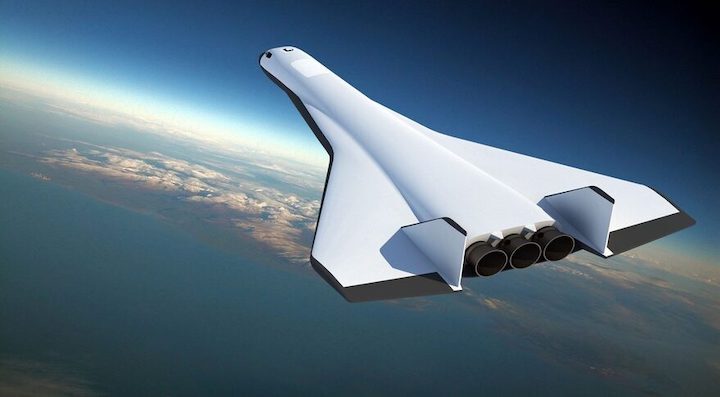21.01.2022

WASHINGTON — A startup has raised a seed round of funding to pursue development of what’s long been considered the holy grail of space transportation: a single-stage-to-orbit reusable spaceplane.
Radian Aerospace, based in the Seattle suburb of Renton, Washington, announced Jan. 19 it had closed a $27.5 million seed round led by venture capital fund Fine Structure Ventures. Other investors include from EXOR, The Venture Collective, Helios Capital, SpaceFund, Gaingels, The Private Shares Fund, Explorer 1 Fund and Type One Ventures.
Radian, which had been in stealth mode before this funding announcement, is working on a spaceplane concept called Radian One. The vehicle is designed to take off from a runway, carrying people and “light cargo” to low Earth orbit before returning to a runway landing.
“We believe that widespread access to space means limitless opportunities for humankind,” Richard Humphrey, chief executive and co-founder of Radian, said in a statement. “Over time, we intend to make space travel nearly as simple and convenient as airliner travel.”
That vision of “airline-like” access to space has long been a dream for space advocates and entrepreneurs. That was particularly true in the 1990s, when several companies pursued efforts for single-stage-to-orbit (SSTO) reusable launch vehicles. That included a NASA program called the X-33 intended to develop a suborbital prototype of an SSTO vehicle. Lockheed Martin won a contract in 1996 to develop the X-33, which it saw as a precursor for an orbital vehicle called VentureStar. However, technical problems led NASA and Lockheed to abandon the program in 2001 before a first launch.
Livingston Holder, Radian’s chief technology officer, earlier in his career led Boeing’s X-33 proposal. “Back then I was convinced that, technically, one could indeed create a single-stage-to-orbit system but it would be hard for that thing to be a commercial enterprise because it was so expensive,” he said in an interview. “There was a lot of development that had to go on in a variety of different technical areas.”
What’s changed since the 1990s, he said, are advances in several key technologies. That includes carbon composite materials for airframes, thermal protection systems and propulsion. “We’re enabling a capability by integrating technologies that have matured over the last few decades,” he said.
Radian has disclosed few technical details about the Radian One design. The seed round “essentially helps us transition more robustly into the hardware development phase,” Holder said. The company’s work to date has focused on the conceptual design and a few key technologies, such as test-firing “critical elements” of the vehicle’s main propulsion system.
The company said it has launch service agreements for Radian One with commercial space station developers, in-space manufacturers, satellite, and cargo companies, as well as agreements with the U.S. government and selected foreign governments. It did not identify specific customers, value of any such agreements or schedules for delivering those launch services.
“Radian is leveraging a unique combination of technologies with an optimized business model to unlock what I like to call ‘the potential of space,’” said Doug Greenlaw, a former Lockheed Martin executive who is an investor and adviser to Radian, in a statement. “We’re talking about materially enabling an industry that’s expected to grow to $1.4 trillion in less than a decade.”
Holder said human spaceflight will be a key area for the company. “Human spaceflight is fundamental in my view. If you were doing just another spacelift system, I’m not sure we would design it the way we’re designing this,” he said. “If you’re trying to assure the ability to get people to and from space safely, then this is the approach that you take.”
Radian currently has nearly 20 employees, and Holder said the company will hire more people as it advances work on the spaceplane. One challenge hiring people so far, he acknowledged, was that the company was in stealth mode and thus prospective employees had little to go on when considering working for Radian.
“I’ve worked in the space arena for my entire career. This is particularly gratifying for me because I think it would be kind of a culminating activity,” Holder said. “I believe that we are going to be the knee in the curve of human spaceflight for the world. I think our system will probably be as transformational as any new human spaceflight system.”
Quelle: SN

